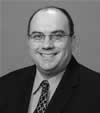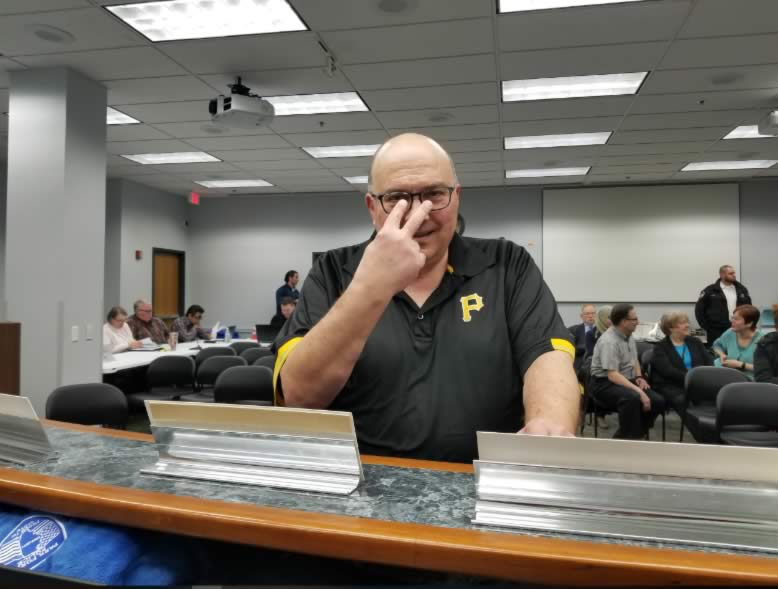
Commentary
By Gary Kopycinski
Are you tired of the annual property tax sticker shock in Illinois. Are you, perhaps, a school board member lamenting incredible budget deficits with the depressed housing market and declining property values nationwide? Do you believe this is a hopeless situation, with our Illinois State House and Senate members failing year after year, decade after decade, to reform education funding? Do you believe there is nothing you can do?
There is hope. There is something you can do that will help ameliorate some of the annual sticker shock when property tax bills arrive.
It is this: tell your Illinois school district to levy what they need, and nothing more. Tell your local Illinois school district to levy a flat dollar amount, instead of a percentage of the value of your property, or, worse yet, the dreaded and regressive "mills."
Consider this. Not long ago, I wrote about a Park Forest resident who was facing astronomical increases in her property tax bill. As you may recall:
When I looked at the bill, I was at a loss to explain the whopping increases. Her 2008 taxes totaled $4,921.18. Of that amount, $3,032.36, or 61.6%, went to the school districts, with School District 163 claiming the lion share at $1,937.43 and SD 227 coming in second at $1,012.93. Her taxes paid to the Village of Park Forest that year totaled $1,442.24, 29.3% of the overall total.
2009 was a completely different story. Her total property taxes ballooned to $7,743.39. School District 163 jumped to $2,934.86, a 151% increase over 2008. SD jumped to $1,599.96, a 158% increase. Park Forest’s share, however, caught my eye: $2,373.30, up 164% over the 2008.
Something was clearly wrong, but I couldn’t figure it out. Like many in Cook County, this resident saw her 2009 Assessed Value drop from $14,225 in 2008 to $13,514 in 2009.
The problem, it turns out, was that this resident’s Homeowner’s Exemption had dropped from her bill. She called the assessor’s office and was told there had been a mistake, and was quite pleased to learn that she would see a reduction in over $1,900 in her current bill.
Yes, she was happy, and returned to say thanks.
Here’s the rub, however. In 2008, this resident paid $1,442.24 to her local municipality, Park Forest. Unlike other cities in Illinois, Park Forest has no separate park district or fire district. Village taxes include care for the opulent green spaces — the village has more parks land per capita than any other municipality in Illinois — fire protection, ambulance services, police, public works, village administration, plus an Aqua Center with three pools and a Tennis and Health Club. While still working to rebuild its business base, $1,442.24 amounts to $120 and change per month for all of these services. That’s less than many of us pay for family plans on our mobile phones.
This resident was paying 61.6% of her property taxes to the local school districts, amounts determined on a percentage rate. Every year, the local school districts shoot craps with their budgets, hoping that their percentage-based levy will be enough to cover expenses. The media then pounces like jackals over a fresh kill when one of these districts ends up in the red, denouncing teacher salaries or some other sort of nonsense.
Here’s a partial solution. No, this will not solve the overall problem in Illinois that education is under-funded by the state and that an inordinate amount of the burden of school funding falls on the property owners and business operators. That problem still needs to be fixed. However, this will mitigate somewhat the unjust increases in property taxes every year.
Tell the school districts to levy only what they need. Instead of a percent, tell the school districts to levy the dollar amount they will need to fund their budgets.
Many municipalities in Illinois fund their budgets in this manner. Frankly, as a local elected official, I could not comprehend putting together a budget without having at least some idea of the next annual series of revenue streams. Yes, sales taxes take a dip during recessions, as do income taxes (one of the many reasons our state is experiencing such huge deficits), but levying a dollar amount instead of a percentage would go a long way toward residents and business owners seeing much more reasonable increases in their property tax bills every year, instead of school districts gambling year after year, and hoping, maybe this year, baby gets a new pair of shoes.
The writer is a Village Trustee in Park Forest.








